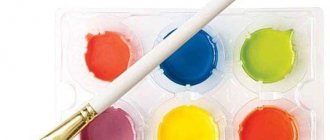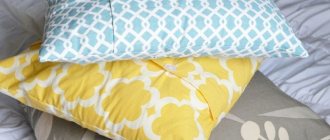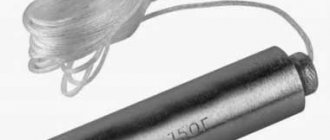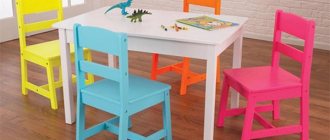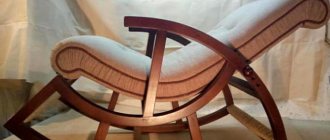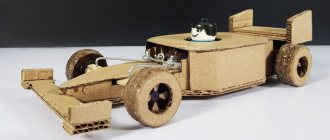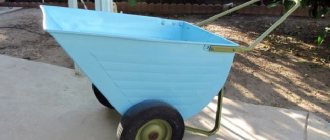Glowing paint can be a source of inspiration and material for creating unique decorative effects. It glows in the dark, turning an ordinary room into a fabulous place. But not only the interior is decorated with this paint. Luminescent pigment will help give an unusual look to any surface or object. And at the same time, the luminous composition is easy to prepare with your own hands at home.
What is luminescent paint and how does it work?
Luminescence is the ability of a substance to glow in the dark due to previously accumulated light energy. Luminescent paint contains substances such as luminous pigments (luminophores). They “accumulate light” during the day or while artificial lighting is on. And when darkness sets in, the bright glow of the painted surface becomes noticeable.
Important! Luminescent (luminescent, self-luminous) compositions should not be confused with fluorescent paints. The latter can glow only under the influence of ultraviolet rays (you need to buy special lamps for them).
Luminescent paints glow in the dark due to the accumulated light energy.
The process of accumulation and release of light energy by the phosphor is reversible, so the luminous paint will “work” for years. Phosphor is a physically and chemically stable substance that will last at least 30 years even outside the building. In this case, only 15–20 minutes of “recharging” with bright light is enough for the painted surface to glow for about 8 hours. The brightness of the glow depends on the concentration of the phosphor in the paint.
According to the principle of action, luminescent materials are similar to phosphorescent ones. But the latter contain phosphorus that is hazardous to health. Therefore, they are used very rarely and only for outdoor work. But phosphor-based materials are completely safe.
Additional effects and drawings
The high decorative characteristics of textured paints provide wide scope for creative imagination.
A number of options for additional decoration of the surface of textured paint are used:
- Trowel. If you have enough work experience, you can achieve the creation of full-fledged artistic compositions on the ceiling or walls. Most often, the brush stroke technique is used for this: instead of a brush, in this case the artist holds a trowel.
- Stencils, sponges, stamps, etc. To create a uniform surface for additional decoration, you can use pre-selected stencils or sponges. The print is applied to the still raw material, so in such cases it is better to work together: one person applies the paint with a roller or spatula, and the other then applies additional prints to the surface.
- Graters, scallops. They are used to scratch the surface (this technique is typical for creating the “Marseilles wax” texture).
- Azure. Using this material, the painted surface of the ceiling or walls is created with an additional effect. It can be shine, gloss, mother-of-pearl, etc. This will require a two-layer application of the glaze using a short-nap roller or paint brush. A pre-moistened and wrung-out natural sponge is also often used. Having dipped it in mother-of-pearl azure, decorate the base using circular movements. To increase the clarity of the resulting pattern, the sponge is pressed harder and rolled.
To protect adjacent surfaces from paint, the boundaries of the area to be finished are taped with masking tape. If you lack experience, it is not recommended to immediately take on the design of open areas of the ceiling or walls. It is better to choose for preliminary training a place on the wall that will later be covered by a cabinet. Given the thickness of the textured paint, it takes several days to completely dry.
Scope of application of luminous paints
In addition to the phosphor itself, the luminous paint includes a transparent varnish (it acts as the basis of the material). The area of application of a particular composition depends on the properties of the varnish. It can be selected for almost any surface - metal and plastic, drywall and wallpaper, concrete and plaster, textiles and wood, glass and ceramics.
On a note! The luminous composition can be applied to fresh flowers and used for body art. But it must be a water-based acrylic dispersion that is safe for health.
Glowing paints are often used when performing body art work.
Luminescent paint is used:
- when applying road markings, painting fences and road signs;
- for decorating interior surfaces (applying drawings to walls, ceilings, floors);
- for painting furniture and other interior elements;
- in make-up, stage art, in the creation of theatrical costumes and scenery;
- in floristry;
- in the production of advertising products (from signs to souvenirs);
- in landscape design (from painting gazebos and fences to creating complex patterns on facades);
- in tuning cars, bicycles, motorcycles (for airbrushing, painting wheels, hubcaps, bumpers, spoilers);
- for the production of workwear for road and emergency services workers.
Car tuning is one of the areas of application of luminous paint
It is necessary to secure a friend’s fence near the road
My friend's country house is located near the road. At night the machine tried to straighten the fence in its own way. The car dented a temporary fence made of corrugated sheets. Vadik was going to install a stone base and a forged top
He was worried that the passengers of the careless driver could then be seriously injured. It was necessary to highlight the fence line with light or special paint
Reflective paint
A friend had LED lamps hung around the perimeter. But they went out along with the road lights when the electricity went out. Far from the city this happened often. I offered him various options:
- install autonomous power supply for fence lighting;
- install reflective elements made of plastic;
- stick a luminous film;
- apply special paint.
The first two options are costly financially and physically. The film can only be pasted on a smooth surface. Glowing paint remains. Vadik wanted to know:
- what it is like;
- can it be applied to fabrics?
- how to cook with your own hands.
Types of luminescent paint
All compositions on the market can be divided into two large groups:
- Colorless (or translucent). These are varnishes that are practically invisible in daylight. They can be applied over any “visible” pattern.
- Colored. In addition to the phosphor, these enamels contain a coloring pigment (color). During the day they look like regular paints, but at night they glow.
There is a large assortment of luminescent paints on the market.
Also, luminescent paints and varnishes differ in the composition of the base and performance properties. Among them are:
- Polyurethane-mineral enamels. They have high adhesion and are suitable for painting various plastics.
- Water-dispersed (acrylic) emulsions. Safe and dry quickly.
- Heat-resistant paints. They create coatings that can withstand heating up to +500 °C. Good for painting metal structures, glass, ceramics.
- Waterproof compounds. Create a thin waterproof film on the painted surface. Used for painting swimming pools, drainage systems, and bathroom elements.
We make the reflective composition ourselves
Reflective paint is easy to make and can be done with your own hands. For work we will need:
- Gloves, safety glasses, a respirator, because safety comes first!
- Reflective element
- Colored primer color
- Clear varnish
As a rule, all of the above components are sold as a ready-made set, with rare exceptions - without gloves or other protection. After collecting all the components, we proceed to the process of preparing the mixture. Here comes the turn to read the instructions because... Depending on the type of surface to be painted, compositions and methods vary. There will be one for road markings, another for metal, and a third for signs and posts. We will not describe each method, but move on to the next chapter, where we will describe the process of painting with our own hands.
How to make glowing paint from phosphor powder?
You can make paint with a glow effect with your own hands. To do this, you need to buy a phosphor, select a transparent varnish and a solvent for it. You will also need ceramic or glass dishes for mixing the ingredients.
The phosphor of the desired color can be found on the Internet or a building materials store. It is quite expensive, but 100 g of this powder is enough to completely color about 8 square meters. m of surface. The price depends on the color of the glow: pigments in light green, blue and white shades are cheaper, but brighter ones - red, orange, blue, green - are more expensive.
Phosphor - luminous powder for making luminescent paint
Important! The varnish should be chosen according to the surface that will be painted. This is the only way the finished paint will adhere well.
How to make glowing paint at home:
- Pour varnish into the dishes.
- Add powdered phosphor (the ideal ratio is when the composition consists of 70% varnish and 30% luminous pigment).
- Add a little solvent to the mixture (up to 1% of the total mass).
- Stir thoroughly.
- If you need to get a colored composition, color is also added to the dishes.
Materials and tools necessary for preparing luminescent paint
Paint made in this way is used and stored in the same way as regular varnish of a similar type.
Application technique
Most often, such paints and varnishes are applied to facade parts and various protruding parts of structures . Reflective pigment is the main distinguishing feature of their composition, which eliminates the need to use additional decorative layers. All that is required for liquid formulations is to mix them first. Before using materials in tubes or cans, you don’t even need such a small thing - they are ready for use from the very beginning.
But first, take care of the surface you are going to apply paint to. As with any painting and finishing work, you need to remove any foreign elements from the surfaces, such as dust, rust, grease stains and dirt. If you are going to apply paint to the road surface, then pay attention to pieces of earth and clay - they need to be removed to the base.
If the area to be painted is small, then it is advisable to use aerosol reflective varnish in cans. Otherwise, you will need any of the common painting tools - a brush, roller or spray gun. Moreover, the latter is used for working only with fairly liquid compositions. then 3 options:
- Mixing a varnish base with reflective balls and color. This method is not designed to produce a thick consistency and can effectively use a paint sprayer;
- The base in the form of varnish is applied to the surface separately from the entire composition, and pigment balls of the desired color are scattered from above using a sieve onto the varnished areas. Excess balls are removed (a jet of compressed air does an excellent job of this). Half of the remaining pigment is not painted over, that is, the previous layer of varnish serves as its adhesive base. This method is used in large-scale road markings;
- White varnish is applied to the surface like a primer, and after it dries, a colored reflective layer is applied.
It is recommended to carry out all work with reflective paint at low air humidity and room temperature. To increase the resistance of the reflective coating to wear, the composition additionally includes quartz sand (with a grain size of no more than 0.2 millimeters and in a proportion of up to 1/100 of the total mass).
Making your own phosphor
If you really want to, you can make your own phosphor. True, this will require more effort and special reagents. What do we have to do:
- Take pine concentrate and dissolve it in clean water in a ratio of 1:50. The finished solution should have a yellow tint.
- Pour 2-3 g of boric acid into a heat-resistant bowl with a wide bottom.
- Place about 10 drops of pine solution on the powder.
Coniferous concentrate is the main component that affects the glow of homemade phosphorOn a note! The color and intensity of the glow of the resulting phosphor will depend on the concentration of the pine extract. Therefore, it can be varied to achieve the desired effect.
- Mix the resulting mixture thoroughly and level it over the bottom of the dish in a layer no thicker than 4 mm.
- Place the dishes on the electric stove and dry over low heat.
- After the water evaporates, the mixture will begin to melt and bubbles will appear on its surface. They should be pierced.
- When the mixture is completely melted, it must be removed from the stove and left at room temperature until it cools completely.
- Grind the frozen crust into powder. This will be the phosphor, which can already be mixed with transparent varnish and used for its intended purpose.
Before making a phosphor, you should calculate the required volume of luminous paint. It is quite possible that it will be easier and cheaper to buy ready-made material in a store. In addition, “branded” paint will always be of higher quality than artisanal paint, and the color of the glow can be selected immediately, without lengthy experiments. And having one or several jars of luminescent paint in your arsenal, it’s easy to create an unusual thing, stylish tuning or a unique interior.
Effect on the body
As for luminescent paints , their factory production is a complex technological process, which has its own costs. Pay attention to the presence of phosphorus. If it is included in the paint and varnish material, then it is better not to use it indoors or on clothing; at most, give it a place in the yard (preferably where children do not play).
The glow of most modern reflective materials is due to the formation of defects in the crystal structure of their substances. These defects are formed by adding activator impurities. At the same time, no radioactive elements, as was once upon a time, are added to reflective paints. Light radiation occurs in the visible spectral range, which is why they do not harm human health.
There are even specific luminous compositions for the body that are applied directly to the skin, but they must meet hygienic standards and must also be accompanied by special safety certificates. Therefore, it is impossible to give a definite answer about the safety of coloring products - you must always proceed from the composition.
Benefits of purchasing
The following types of luminescent paints can be purchased in stores:
- for metal;
- for glass;
- for glossy surfaces;
- for wood;
- for fabric;
- with a water-based base;
- for concrete.
There are colored dyes and clear varnishes. Any idea can be put into practice without problems. You just need to buy one of these luminescent paints.
The pigment itself is also always on sale. It sometimes costs more than paint, but this is not surprising. You can select the concentration taking into account individual needs; mix the powder with the base in the amount you want. As a rule, a little is needed. To paint the ceiling of a small bathroom, for example, you will need about 25 g of pigment and 2 kg of paint. Sometimes you just need to draw a picture. Having bought the pigment, used it, used up some of it, you can put it aside, and later decorate something else with it.
With the help of a phosphor and a base, you can create not only a unique wall design, but also an unusual manicure. It will also come in handy when you want to give an original gift to a loved one. For example, put an ornate, fancy pattern on a notebook, a postcard - why not? Things will cease to be ordinary: as soon as it gets dark outside, they will begin to glow.
Originality helps to surprise, delight, and puzzle. You don’t need to be able to draw well - it’s easy to come up with an abstraction and create a picture using a stencil.
If the lights are turned off
An interior design in which walls and interior items are decorated with a glow-in-the-dark pattern can be called extravagant. If you paint the entire wall with this paint, darkness will cease to exist. A kingdom of twilight can be created in the living room or hallway, in the bathroom, in the toilet, in the kitchen, balcony, in service rooms and passage rooms. If a person was taking a shower at the time of a power outage, phosphorus paint will save the situation: it will be easy to find a towel and the lock latch too.
This is original lighting, but it will not replace a chandelier: it cannot be turned off in any way - this is a minus . In the bedroom you need to create decor with care. But in technical rooms it is appropriate to use, painting surfaces with a large area. In the attic or basement, fluorescent dye will be useful. At night the home will be cozy and comfortable.
